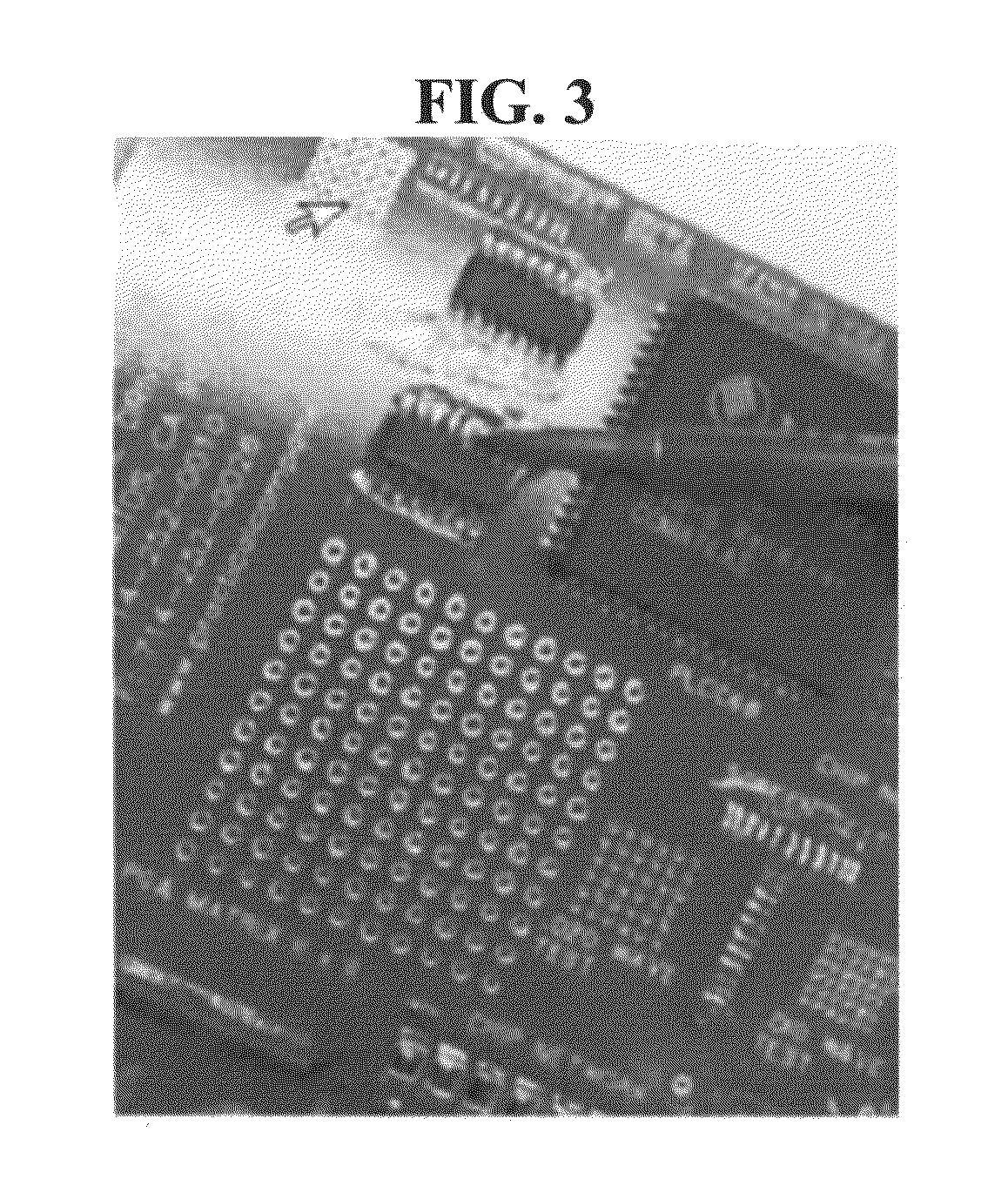Water immiscible rosin mildly activated flux
a technology of immiscible rosin and flux, which is applied in the direction of manufacturing tools, welding/cutting media/materials, and welding apparatus, etc., can solve the problems of less desirable flux for electronics applications, joint fatigue/cracking, and circuit failur
- Summary
- Abstract
- Description
- Claims
- Application Information
AI Technical Summary
Benefits of technology
Problems solved by technology
Method used
Image
Examples
example 1
Depicted in FIG. 1
[0038]A modified RMA flux was prepared by mixing 1 gram of grape seed oil in 9 grams of Alpha 611 (a standard RMA flux available from Alpha Metals, Inc.; Jersey City, N.J.). The modified RMA flux was applied on the substrate of a printed circuit board, and components were soldered to the substrate. The modified RMA flux was then removed using a 12 wt % aqueous amine solution (Aquanox® 4615US available from Kyzen Corp.; Nashville, Tenn.) in deionized water.
PUM
| Property | Measurement | Unit |
|---|---|---|
| concentration | aaaaa | aaaaa |
| temperature | aaaaa | aaaaa |
| temperature | aaaaa | aaaaa |
Abstract
Description
Claims
Application Information
 Login to View More
Login to View More - R&D
- Intellectual Property
- Life Sciences
- Materials
- Tech Scout
- Unparalleled Data Quality
- Higher Quality Content
- 60% Fewer Hallucinations
Browse by: Latest US Patents, China's latest patents, Technical Efficacy Thesaurus, Application Domain, Technology Topic, Popular Technical Reports.
© 2025 PatSnap. All rights reserved.Legal|Privacy policy|Modern Slavery Act Transparency Statement|Sitemap|About US| Contact US: help@patsnap.com



